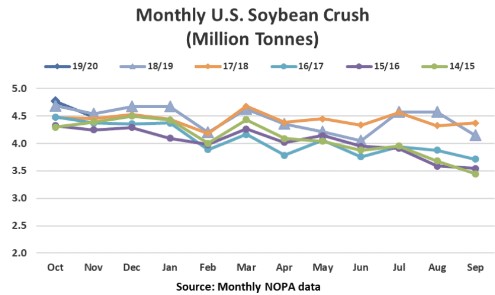The National Oilseed Processor Association (NOPA) issued November soybean crush and stocks data on Monday, December 16. According to the data, NOPA member soybean processing in the second month of the 2019/20 product (October-September) marketing year totaled 4.488 million tonnes. This was off 0.285 million tonnes from October and compares to last November’s crushings of 4.544 million tonnes.

According to analysts’ expectations published by Reuters, the trade was looking for crush to come in near 4.681 million tonnes with the lowest published guess slightly above the actual crushings at 4.589 million tonnes. Again, this month, there was a wide range of guessing from polled analysts, with some respondents suggesting that crush could come in as high as 4.845 million tonnes. It is not uncommon for crushings to slip from October to November, given the lower number of calendar days, but there were some ideas in the marketplace that crushings would rise as harvest advanced and brought new-crop soybeans into crushers’ supply chains. Instead, some analysts believed that low farm prices and depressed margins were factors that limited crushings for the month.
Click here to see more...